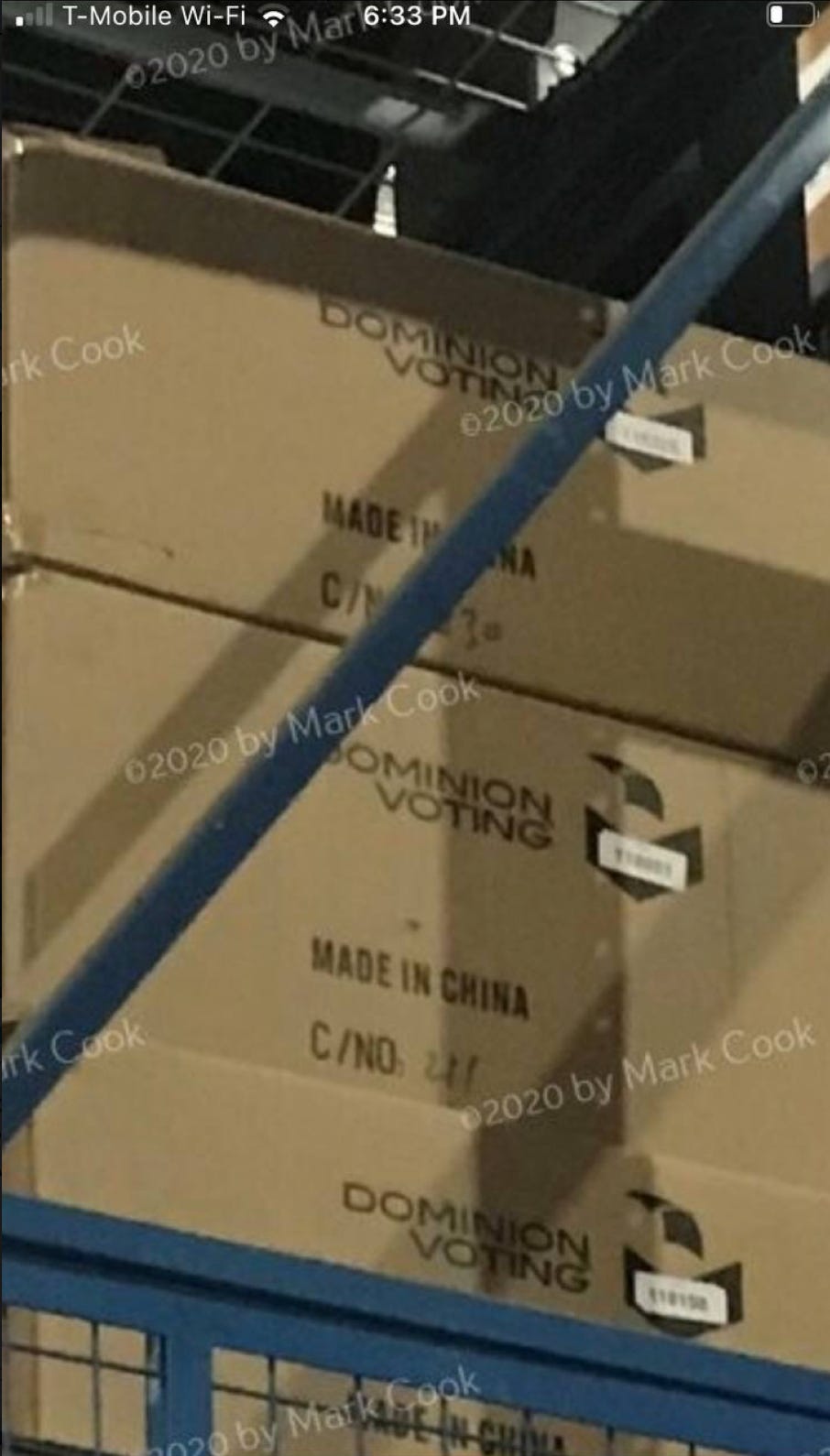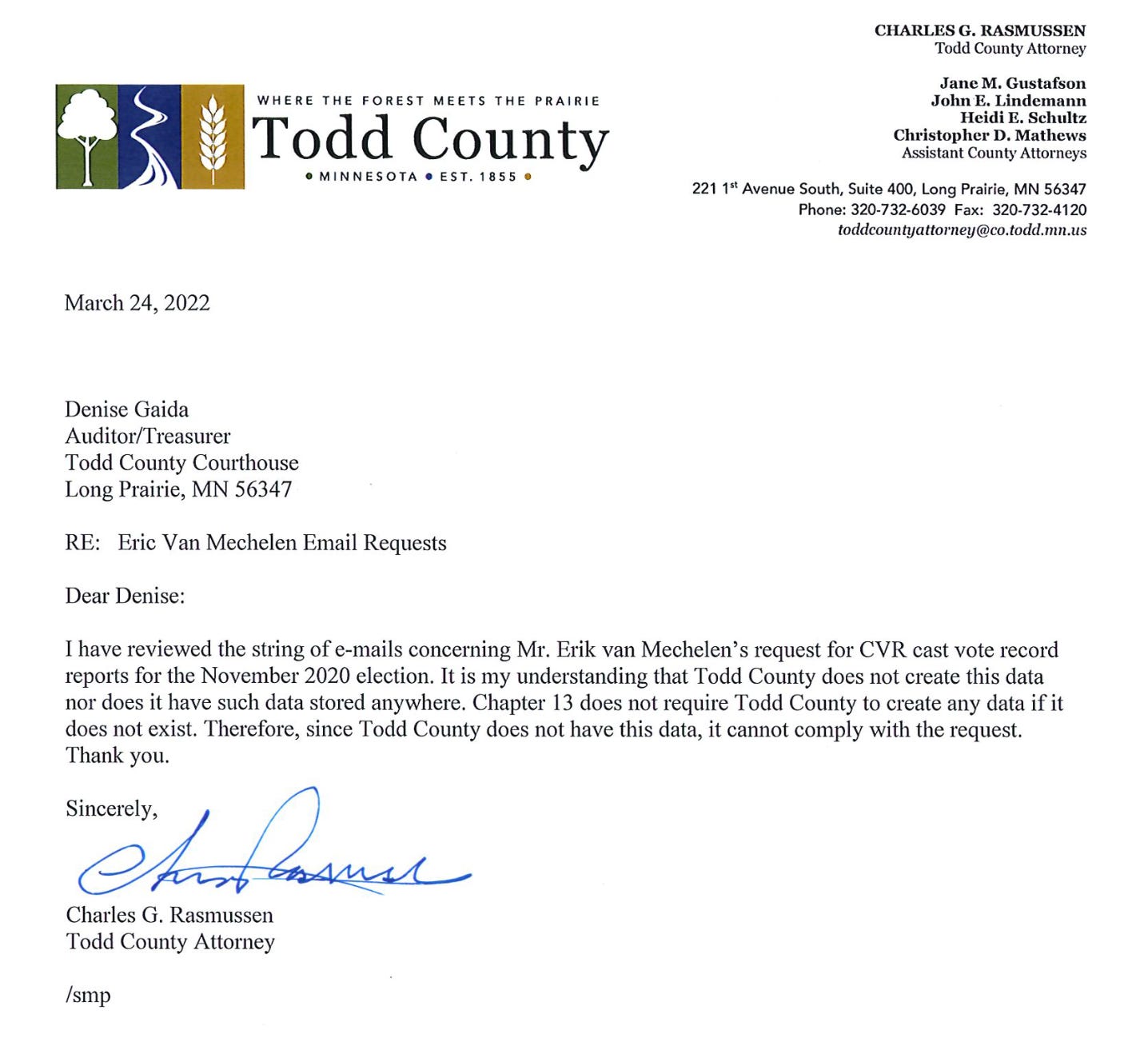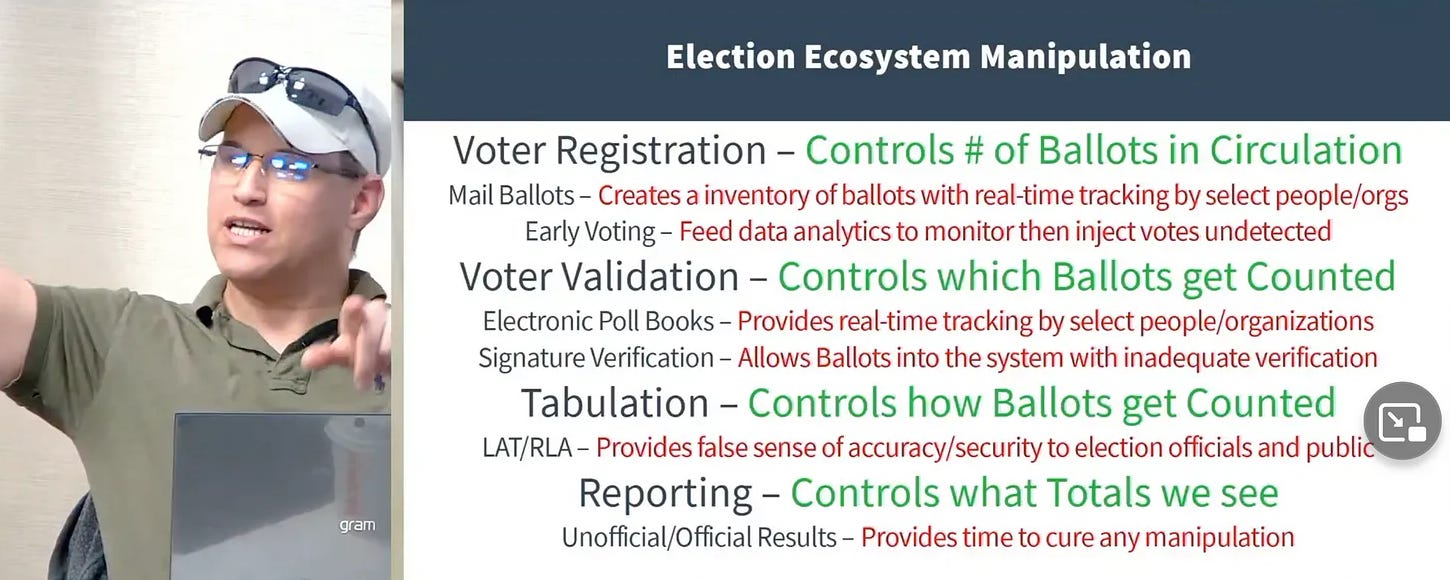Chapter 2 - Why Cast Vote Record Ballot Images Matter
“There’s no way we can ever trust a computer system built with components made overseas, particularly in China, or assembled in China, let alone both, and that’s what we have in our voting system, unfortunately.”
—Col. Shawn Smith, USAF, Ret. – 25 year Air Force veteran and the former director and test manager for the operational testing of complex, computer-based weapon systems and a subject matter expert on the security of computer-based election systems, calling into a Tarrant County, Texas meeting

In 2005 cast vote record functionality became a standard on electronic voting equipment and have remained part of the guidelines and requirements for certification.
The reason is simple. The public used to be able to watch the hand count process. After the hanging chad narrative drove a massive injection of funding for electronic voting equipment, America has slowly, and then quickly, seen the transparency of its election process fade away. Since voters can no longer verify the an electronic tabulator's accuracy (nor security) on election day—an "I voted" sticker is not verification—the ballot images (part of the cast vote record) is an essential internal audit rightfully made public. The interpretive file of the cast vote record is stored both on the tabulator itself and in the removable media (such as a thumb drive) and once decrypted may aggregate results on a central computer, sometimes called an election management system, either at the precinct or at the county level.
Note! Logic and Accuracy Tests performed on tabulators well before elections and Post Election Reviews, also known as risk-limiting audits, are in the first case a shell game because in states like Minnesota less than 1% of ballot positions (ovals) are audited and regularly omit down ballot races and in the second case only risk-limiting from the perspective of those trying to subvert elections.
In [S]elections in Minnesota, published June 2022, persuaded by propaganda and a misreading of an ES&S manual, I made an error suggesting that CVR functionality could in some situations be turned off. Having had to correct myself a number of times humbled me and is a reminder to check not twice but thrice.
Very, very little transparency
In many counties and sometimes entire states, the ballot images and the interpretive files have not been released to the public despite numerous legitimate freedom of information (FOIA) requests, some described in the CVR Cover Up series (for Minnesota) on the Midwest Seeds blog. County officials could avoid a deluge of requests by posting these public records online like, for example, Dodge County, Wisconsin has done.
The attempts have increased to hide the truth waiting in the data. Perhaps because litigation may have eventually impelled their release, in at least one state (Minnesota), ballot images have been made non-public data (as of late May 2023) by the 93rd Minnesota Legislature. But not before almost all counties denied their existence or delayed their release. Citizens have been right to ask, If there was and still is nothing to hide, why not make this data public? (And why deny their existence to begin with?)

Despite the lack of transparency in many states, some county auditors and election officials have taken it upon themselves to provide this data in useful formats so that citizens may review it.
Fingerprints of fraud
Fingerprints of Fraud: Evidence and Analysis of a Multi-State Conspiracy to Defraud the 2020 Election, Volume 1 found on Vote Database by Jeffrey O'Donnell details an analysis of about 200 cast vote records from the 2020 General Election from multiple states detailing unnatural patterns, particularly for mail-in and early voting periods. 2022 cast vote records are also available. For this author, the findings of that report are already one of several smoking guns proving election manipulation at scale. Of particular help are the Mesa 3 Report with findings from Tina Peters' heroic work documented in the film, Selection Code.
How hand counts will change the future of America
Recently, Rick Weible used publicly available ballot images from Dodge County, Wisconsin, and printed them onto stock ballot paper purchased from SeaChange in Minnesota. In other words, citizens could now perform an audit of that county's ballot images if they chose. In initial reviews, just for starters, it was found that because of folds in some ballots the hand count did not match the tabulator count, nor the official results. If this wasn't 2023, with all the recent findings already documented, this might have been surprising.
July 13, 2023 was a special day for me. My first hand count. Having heard a bit from Rick Weible from his work in Sioux Falls and Brookings, South Dakota, it still brought a big smile to my face to see the stacks of 2020 ballots from Wisconsin and the printer cooking up the new and improved tally sheets (inspired by Missouri and Texas).
More forward looking in nature, these hand count studies in South Dakota and Minnesota are laying a foundation for hand counting practices to be used across the country. Eventually, once the decision is made to use that approach, we will need a large number of people ready and willing and proficient in hand counting. These manual tabulation efforts in the upper midwest join ongoing work in places like Osage County, Missouri, and Mark Cook's Hand Count Road Show in Texas. If I didn't believe we would soon be bringing this latest and greatest method (which is beyond reproach and 100% auditable) to elections all across America, I wouldn't be spending my time learning and helping to teach others.
On Hand Count Road Show can be read:
"Running an efficient precinct-based transparent hand-count using Ballot Hand-Count Calculation Stations with integrated cameras that allows every citizen to independently verify every vote and every ballot for no cost. This insures 100% reliability and returns complete trust to our election system. Please see Mock County’s Election Results to see a sample of the process."
The February 2023 recording of Mark Cook's presentation on the election ecosystem (video from day 2, start at 2h20m) was pivotal to my understanding of not only the problem but also that we are not far away at all from a solution. Why not reclaim control of our elections at the precinct and county level instead of outsourcing them to the state and corporations who don’t share the interests of the people?

Obviously, hand counting itself isn't new. When Linda Rantz with Cause of America shared her experience in the April 2023 Osage County, MO election, I was reminded of that fact. And yet, as a nation, we have to learn to do it all again. At a recent Anoka County, MN commissioner meeting, Ruthie Mund shared stories about hand counting in decades past.
This time around, in 2024 and beyond, everyone is invited and everyone will be involved.